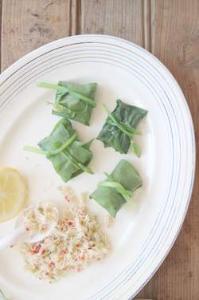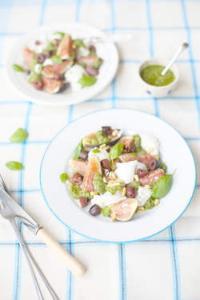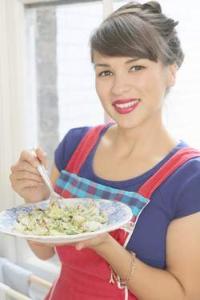These bread recipes are low in salt and saturated fat but high in fruit, vegetables and fibre.

They’ll give you all the energy and nutrients you need while helping you to look after your blood pressure, your waistline and your heart. Better still, they’re delicious too.
Bread is low in fat and if you choose wholegrain options it’s high in fibre too. But it also adds a surprising amount of salt to our diet, making up about a fifth of our salt intake – partly because we eat so much of it and partly because it can be made with a lot of salt.
Bread often contains around half a gram of salt in a slice, that’s 1g in a sandwich before you’ve even added any filling. If you have toast for breakfast, a sandwich for lunch and bread with dinner, that’s 3g in a day – half your daily maximum allowance.
Eating bread with less salt
You can still enjoy delicious fresh bread without the salt.
- When shopping, always check the labels and compare products to find a lower salt option.
- If you buy bread from a baker, you can ask them to make you a batch without the salt. You can slice it while it’s fresh and freeze it, then toast or defrost it, but avoid using the microwave as it tends to dry it out.
- Make your own, it’s warm and satisfying and doesn’t need to be made with salt as you might think.
How to make your own bread
You can make bread without the salt either by hand or using a breadmaker. Breadmakers will make a loaf from start to finish in around three hours and you don’t need to do anything except add the ingredients and set the controls.
Whether you make it yourself or in the breadmaker, the recipe will be the same.
Tips for making your own bread
- Use strong bread flour. If you want to use flour with a lower gluten content, such as wholemeal or granary flour, mix 2/3 of wholemeal or granary flour with 1/3 of strong white flour.
- The easiest yeast to use is the fast action bread yeast, and you can add it straight to the flour without having to activate it first. Fresh yeast is hard to find but a few bakers and health shops do sell it.
- Always use warm water for mixing but not hot water.
- Experiment with flavours. Take your favourite recipe and add nuts, dried fruit, bran, wholegrains, seeds, wheat, onion or garlic for example.
- If you are making the bread by hand, after you’ve mixed the dough, put it in a warm place to rise until it has approximately doubled in size. The time it takes will vary but it usually takes half an hour to an hour.
Low salt bread recipes
You can use any bread recipe, but here are three well tried recipes:
Wholemeal bread
Ingredients, makes 1 loaf (12 slices)
- 300g wholemeal flour
- 150g strong white flour
- 1 sachet (7g) fast action bread yeast
- 2 tablespoons olive oil or rapeseed oil
- ½ pint warm water
Method
- Place all the ingredients in a large bowl and mix to a dough adding a little bit more water or flour if necessary. Transfer to a lightly floured surface and knead for 5-10 minutes, until smooth and elastic. Leave in a warm place until it has doubled in size (about 30 minutes).
- Turn out the dough and knead again for a few minutes. Lightly oil a 450g loaf tin or baking tray. Shape the dough to fit the tin or make an oblong shape to place on the tray. Leave it for about 10 minutes.
- Heat the oven to 220C (Gas mark 7) and bake for 30-40 minutes until golden brown and sounds hollow when tapped underneath. Cool on a wire tray.
- If you don’t eat the bread on the same day, you can slice it when fresh and freeze it.
You can also make this recipe in a breadmaker. Place all the ingredients in the container, choose a programme and let the machine do the work.
Fruit Loaf
Ingredients, makes 1 loaf (12 slices)
- 450g strong white flour
- ½ pint warm water
- 2 tablespoons olive oil or rapeseed oil
- 1 ½ sachet (10.5g) fast action bread yeast
- pinch of ground cinnamon
- 100g dried apricots
- 50g dried dates
- 100g dried raisins
Method
- Chop the fruit finely by hand or in a food processor to the size you like.
- Place the flour in a large mixing bowl together with the yeast, water, olive oil, cinnamon and chopped fruit. Mix to a dough.
- Transfer to a lightly floured surface and knead for 10 minutes, until smooth and elastic. Leave in a warm place until it has doubled in size (about 1 hour).
- Turn out the dough and knead again for a few minutes. Lightly oil a baking sheet and shape the dough to an oblong. Leave in a warm place for 30 minutes.
- Heat the oven to 220C (Gas mark 7) and bake the bread for 30 minutes. Cool on a wire tray.
You can also make this bread in a bread maker, using the speciality bread programme.
Naan Bread
Ingredients, makes 6
- 450g strong white flour
- 150ml warm skimmed milk
- 1 sachet (7g) fast action yeast
- 150ml low fat yoghurt
- 2 tbsp olive oil or rapeseed oil
- 1 egg lightly beaten
Method
- Place the flour in a large bowl together with the milk, yeast, yoghurt, oil and egg. Mix to a dough, adding more flour if necessary.
- Transfer to a lightly floured surface and knead for 5-10 min, until smooth and elastic. Leave in a warm place until it has doubled in size.
- Turn out the dough and knead again for a few minutes. Divide into 6 balls (approximately small tennis ball size).
- Heat the oven to the highest temperature and put the baking tray in the oven to heat.
- Take one ball and roll it into a pear-shaped naan, about 25cm long by 13cm wide.
- Remove the hot tray from the oven and place the naan on it. Put it into the oven immediately for 3 minutes or until it puffs up.
- Remove from the oven and wrap in a clean tea towel to keep warm. Make all the naans in the same way and eat hot.
You can freeze the naans for another day. To use them from frozen simply heat them up in the oven. To add flavour, add chopped coriander leaves, cumin seeds or chopped onions and chilli.
You can also make naans using a bread maker using the dough programme.
Celebrity Chef Rachel Khoo's low-salt recipes
Cooking without salt is easier than you might think. Cutting out the salt doesn't mean you have cut out the flavour.
The lovely chef Rachel Khoo has provided us with these recipes for our Know Your Numbers! Week for you to try at home as part of your healthy eating’ and to help manage high blood pressure. Why not give them a go to see how tasty life without salt can be.
Rachel Khoo is an English chef, writer and broadcaster, with her own BBC cooking series.
Wild Garlic Ravioli with crab

Ingredients, makes 12
Wild garlic is abundant at the moment and paired with crab is a revelatory pairing. Crab meat is surprisingly sweet in its purest form, which is why it is often pepped up with zippy chilli and lifted with citrus. The pepperiness of the garlic contrasts beautifully with the crab meat and makes a perfect ‘carb-free’ ravioli casing. You could serve these as a canapé, with a smear of mayonnaise or straight up.
Preparation time: 15-20 minutes
Cooking time: 1 minute
- 200g crab meat
- Juice and zest of ½ lemon
- A few twists of black pepper
- ½-1 hot red chilli (to taste)
- 24 wild garlic leaves with stalks
Method
- In a medium bowl, mix the crab meat with the lemon juice and zest, and black pepper. Deseed and finely chop the chilli. Check its heat by nibbling a tiny piece and then add according to how much heat you like.
- Remove the stalks from the wild garlic to the base of the leaf. Set 12 of the longest and best-looking stalks aside and finely chop the remaining 12 then add to the crab. Mix to combine. Taste for seasoning and adjust if necessary.
- Prepare a steamer. I use a little bamboo one set over a pan of simmering water. You can also use a colander in the same manner and the lid of a saucepan. Place the remaining wild garlic stalks in the steamer and steam for about 30-45 seconds or until limp. Set aside to drain, but keep the steamer going.
- Assemble the ‘ravioli’. Take 2 garlic leaves and overlap them to make a cross. Place 1 tbsp of the crab mixture in the centre and fold in the leaves to make a sealed parcel. Use one of the garlic stalks to tie the bundle tight. Set aside and repeat the process to make a further 11.
- Once you have all your bundles ready to go, pop them in a steamer (do this in batches if necessary) and steam for about 45 seconds. Remove and drain on kitchen paper. Serve immediately.
Figs with Parmesan-free pesto, mozzarella and black olives

Ingredients, makes 4 as a starter
- 6 figs, quartered
- 20 black olives, halved
- 150g buffalo mozzarella
- Basil leaves, to serve
- Thick balsamic vinegar, to drizzle
Fig season is a joyous time of year for me. Back in my Paris days, the markets would be filled with piles of these squidgy fruit, no doubt sent up from the sunny south where they grow in abundance. I would eat them on the spot, or if I managed to get them home, they would end up paired with a fresh creamy goat’s cheese. Here in the UK it’s not as easy to source figs, even at the height of the season, and I am often fooled by the promise of a beautiful soft plump exterior, only to get it home and realise the fruit is not ripe (they don’t ripen once they are picked). So when you find the perfect fig, give this lovely little starter a go.
For the pesto
- Large bunch basil (about 30g)
- 50g pine nuts, toasted (save 1 tbsp to garnish)
- 3 cloves garlic, peeled
- 85ml extra virgin olive oil
- Juice of ½ lemon
- Black pepper
Method
- Start by making the pesto. You can do this using a pestle and mortar or in a food processor. Add the basil, toasted pine nuts, garlic and half the olive oil. Whizz or bash up the ingredients, then add more oil as needed. Season with the lemon juice and pepper.
- Assemble by dividing the figs, olives, mozzarella and basil leaves between the four plates. Drizzle with a small amount of the balsamic vinegar (optional), top with the pesto and scatter with the remaining pine nuts. Season with extra black pepper and serve.


